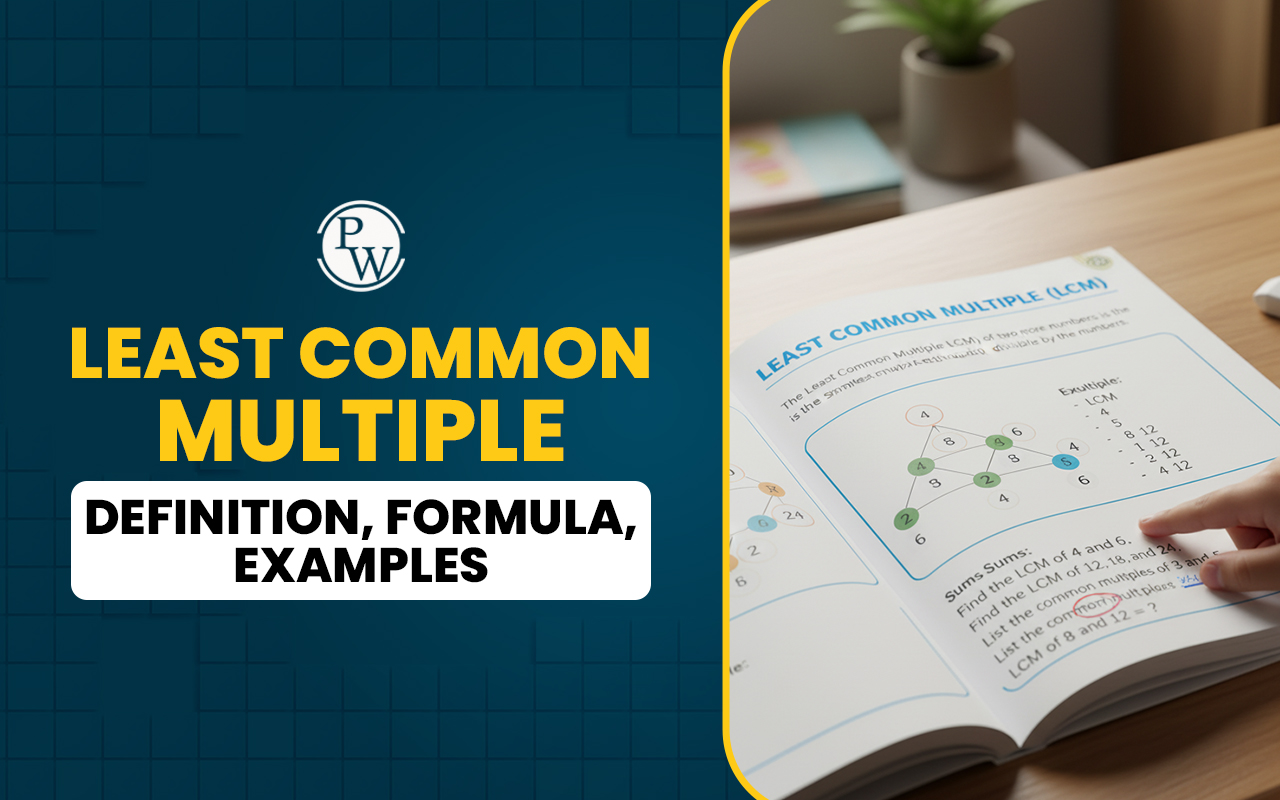
Vowels and Consonants are two types of sounds we use while speaking English. There are 26 letters in total, and they are all either vowels or consonants. These letters help form words and are used in reading, writing, and speaking English correctly. However, when learning about vowels and consonants in English, one common question that often comes to students’ minds is, “What is the difference between vowels and consonants?”
Well, the answer is simple: "Vowels are spoken with an open mouth and free airflow, while consonants are spoken with some blockage of air. To further understand the difference between vowels and consonants, let’s first learn the meaning of each of them.
Read More: Affirmative Sentence
What Are Vowels?
Vowels are letters in the alphabet that are spoken with an open mouth and free flow of air. While saying a vowel, the air comes out smoothly without being blocked by the tongue, lips, or teeth.
In English, the main vowels are A, E, I, O, and U. These are called vowel letters because they make vowel sounds when we speak. The letter Y can also act like a vowel in some words, like "happy" or "sky," depending on how it sounds.
Vowels are important because every syllable in a word must have at least one vowel sound. Without vowels, we can’t say or form proper English words.
What Are Consonants?
Consonants are letters in the English alphabet that are spoken by blocking or shaping the air using the tongue, lips, or teeth. Unlike vowels, the air does not flow freely when we say consonant sounds.
Some common consonant letters are B, C, D, F, G, H, J, K, L, M, N, P, Q, R, S, T, V, W, X, Y, and Z. The letter Y can sometimes be a consonant, like in the word "yellow," and sometimes a vowel, like in "sky."
Consonants help build the structure of words in English. Most words have a mix of vowels and consonants, and both are needed to form clear and complete words.
Key Difference Between Vowels and Consonants in English
Both vowels and consonants are important in the English language. They work together to form words, but they are very different in how they sound and how they are used. Let’s look at some simple ways to understand the difference between vowels and consonants in English.
Meaning and Sound of Vowels and Consonants
-
Vowels are sounds we make with an open mouth and free flow of air. There is no blocking of the air when a vowel is spoken. The sound comes smoothly, and the vocal cords vibrate.
-
Consonants are sounds made when the air is blocked a little by the tongue, lips, or teeth. These sounds are not as open as vowel sounds.
Flow of Air While Speaking Vowels and Consonants in English
-
When we speak a vowel, the air from our lungs flows out freely.
-
But when we speak a consonant, something blocks or changes the path of the air, like the tongue touching the roof of the mouth or lips coming together.
Number of Letters
-
There are 5 main vowels in English: A, E, I, O, and U. Sometimes, Y and W also act as vowels, depending on the word.
-
All the other 21 letters in the alphabet are consonants, like B, C, D, F, G, and so on.
Number of Sounds
-
Even though there are only 5 main vowel letters, they can make around 20 different vowel sounds in English.
-
Consonants make around 24 different sounds when we speak English words.
Use of Articles With Vowels and Consonants
-
In English grammar, we usually use the article "an" before vowel sounds. For example, an apple, an umbrella
-
We use the article "a" before consonant sounds. For instance, a dog and a ball.
Read More: Subject and Predicate
Consonants That Are Like Vowels
Some consonants in English sound a little bit like vowels. These are special sounds called approximants in English. The most common ones are the letters Y, W, R, and L.
These sounds are made with less blockage of air, just like vowel sounds. That’s why Y and W are often called semivowels. For example:
-
The sound of Y in “yes” is close to the “ee” sound in see.
-
The sound of W in “we” is close to the “oo” sound in moon.
Even though they sound similar to vowels, these letters are still consonants because of how they are used in words. They usually come at the beginning of syllables, like in "yellow," "water," "right," or "lamp," which is what consonants usually do.
So, while these consonants act a bit like vowels, they still follow the rules of consonants in English.
Vowels and Consonants Examples
Now that we know the meaning and difference between vowels and consonants, let’s look at some simple examples to understand them better.
-
As we learned, there are 5 main vowels in English: A, E, I, O, U. These letters appear in many words and are spoken with an open mouth and smooth airflow. Some of the examples of Vowels are:
-
A: apple, cat, adapt
-
E: elephant, bed, set
-
I: ink, pig, hit
-
O: orange, hot, dog
-
U: umbrella, up, cup
-
The letter Y also acts like a vowel in some words, like "sky" and "happy."
-
Furthermore, all the other 21 letters are consonants. They are spoken by slightly blocking the air using the lips, tongue, or teeth. Some of the examples of consonants are:
-
B: bat, boy, big
-
C: cat, cup, can
-
D: dog, day, do
-
F: fish, fan, fun
-
G: goat, girl, gun
-
H: hat, help, house
-
J: jam, jet, jump
-
K: kite, king, key
-
L: lamp, leg, lion
-
M: man, map, mouse
-
N: nose, nut, nest
-
P: pen, pig, pot
-
Q: queen, quiet, quack
-
R: run, red, rock
-
S: sun, sea, sit
-
T: toy, tree, table
-
V: van, vase, volcano
-
W: wall, water, wind
-
X: xylophone
-
Y: yellow, yoyo, yes (here Y is a consonant)
-
Z: zebra, zoo
Read More: Sentence Structure
Difference Between Vowels and Consonants in Phonetics
In phonetics, vowels and consonants are two different types of speech sounds. The main difference is how air flows through the mouth when we speak them.
Vowel Sounds
-
Vowel sounds are made when air flows freely through the mouth without being blocked.
-
The tongue changes position (high, mid, low or front, middle, back) to create different vowel sounds, but it doesn’t block the airflow.
-
All vowel sounds are voiced, which means the vocal cords vibrate when we speak them.
-
There are 5 vowel letters in English (A, E, I, O, U), but there are about 20 vowel sounds, depending on the accent.
-
Examples of vowel sounds in English:
-
/iː/ as in see
-
/æ/ as in cat
-
/uː/ as in moon
Consonant Sounds
-
Consonant sounds are made when the air is blocked or partly stopped by the tongue, lips, teeth, or the roof of the mouth.
-
In phonetics, consonants are explained using:
-
Place of articulation: Where the sound is made (e.g., lips, teeth)
-
Manner of articulation: How the sound is made (e.g., stop, nasal)
-
Voicing: Whether the vocal cords vibrate or not
-
English has around 24 consonant sounds.
-
Examples of consonant sounds in English:
-
/p/ as in pen: Voiceless sound made with both lips
-
/z/ as in zoo: Voiced sound made with the tongue near the roof
-
/m/ as in man: Voiced nasal sound
Read More: Active and Passive Voice
Common Mistakes to Avoid with Vowels and Consonants in English
While learning about vowels and consonants in English, students often make a few small but common mistakes. Let’s look at them and learn how to avoid them:
Confusing Y as Always a Vowel
The letter Y is not always a vowel.
-
It is a vowel when it sounds like "ee" or "eye," as in happy or sky.
-
It is a consonant when it sounds like "yuh," as in yellow or yes.
Using the Wrong Article (a or an)
Many students use "a" and "an" incorrectly.
-
Use "an" before words that start with a vowel sound: an apple, an umbrella
-
Use "a" before words that start with a consonant sound: a cat, a dog
Thinking Only A, E, I, O, U are Vowels in Sound
Some words start with vowel sounds even if they don’t begin with a vowel letter. For example:
-
An hour (starts with a vowel sound, ‘our’)
-
A university (starts with a ‘yu’ sound, which is a consonant sound)
Forgetting Every Syllable Needs a Vowel
Every syllable in a word must have at least one vowel sound. Words like "elephant" and "banana" have multiple syllables, and each part contains a vowel.
Mispronouncing Consonant Clusters
Some students skip or mix up sounds in words with more than one consonant together, like in "school," "friend," or "plant." Each consonant sound should be heard clearly.
Avoiding these small mistakes can help students become more confident in using vowels and consonants correctly in English.
Also Read: Plural Nouns
Fun and Easy English Learning Online Classes for Kids by CuriousJr
Does your child find it difficult to speak fluently, write correctly, or use proper grammar in English? These small gaps in early learning can affect confidence, school performance, and communication skills later in life.
That’s why CuriousJr’s English Learning Online Classes, based on Cambridge English Scale and CEFR standards, are designed to help your child improve their grammar, writing, pronunciation, and public speaking—step by step.
-
Children begin at their current level, learn 2000+ new words in every lecture, and build strong sentence structure through regular speaking and writing practice.
-
From building a strong base to excelling in public speaking, this course makes sure of a smooth learning and all-around language development.
So, why wait? Book a demo class now at just INR 49 and support your child in becoming confident, fluent, and ready to express themselves clearly in English.










